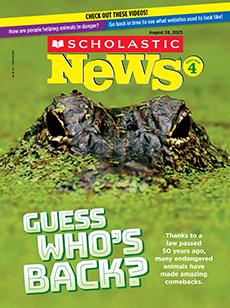In late November, people across the U.S. will celebrate Thanksgiving. But the holiday means something different to 14-year-old Storam Coombs. That’s because her ancestors were at what is often called the first Thanksgiving feast.
Storam is a member of the Wampanoag (WAHM-pahnawg) Nation. They were the first Native people to make contact with the Pilgrims. Without them, Plymouth Colony might have failed.
“I feel proud to be Wampanoag,” Storam says.

